


"The P&O has its own standards, which are higher than the average. It therefore offers to officers in all departments, conditions better than those applied to the industry as a whole. This has been true in bad times as well as in good, and will, we hope, remain true." From Regulations, Instructions & Advice for Officers of the Peninsular & Oriental Steam Navigation Company ~ c1959.
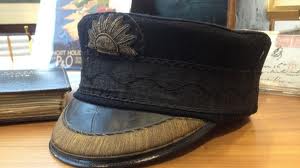
"Junior Officers often started very young in the Company.......the Company preferred to do its own training, where everyone was taught to live under stern discipline....."
Cadets joined the Company at 17-18, from the principal nautical training ships and colleges, indentured to between three and four years service as apprentice deck officers.
"A special advantage of service in the P. & O. Company's employ is the variety of routes and trades upon which the ships are engaged. Perpetually voyaging to and fro across the North Atlantic must become excessively monotonous, while the long haul down to Australia and back without a change, year in and year out, to my mind would be frankly wearisome. I had not been long in the Narkunda when I gained my expected step to Second Officer, being appointed on promotion, according to custom, to a cargo-ship, the Peshawur." Captain D G O Baillie - A Sea Affair

P&O ss Caledonia ~ launched 1894
"There was an enormous dignity attached to a liner officer in those days. For instance, in the simple operation of drawing a little circle to mark the ship's noon position on the track chart, I had a Quartermaster to assist me. He opened the frame and held the dividers for me, and walked discreetly behind me as we wended our way to the First and Second Saloons."
Third Officer Gordon Steele (later Commander VC, RNR) ss Caledonia 1914
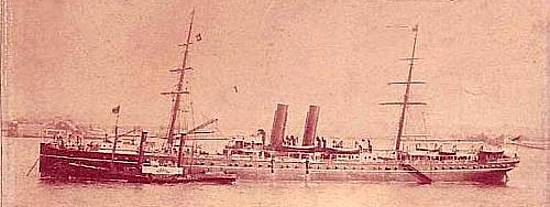
"It would be ungrateful in the last degree not to speak in terms of warm praise of the ship, her officers and the general management of the voyage. None indeed but the most exacting could find anything to complain of. Its daily and nightly work has been performed with a quiet discipline and precision which could not be surpassed. The company may be proud of such a ship as that in which we sail: for a finer vessel never took to the sea - nor one as all on board agree - better commanded and officered."
Sir Edwin Arnold, ss Parammatta, India Revisited.
The Commander
"The Company emphasised its difference from others, whether deliberately or not, using terms of its own. Its Captains were always called Commanders." The Story of P&O ~ David & Stephen Howarth
The Commander was responsible to the P&O management for the entire operation of the ship, and for the discharge of their duties by Officers of all departments. It followed that Officers of all departments were in all respects subject to the orders of the Commander.
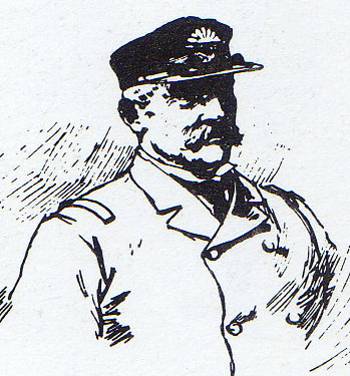
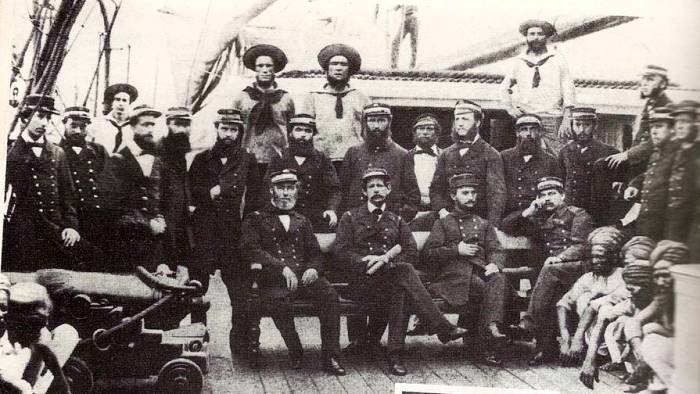
Officers and Crewmen of the ss Benares in 1862, with cannon to deter Chinese pirates
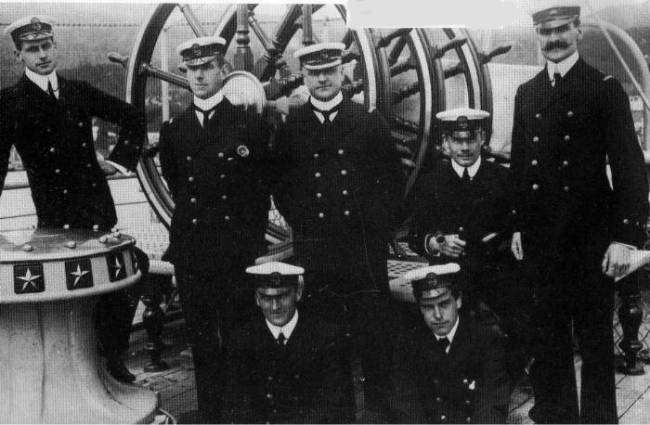
Commander and Officers of the Cruising Yacht Vectis.
Built
as The '
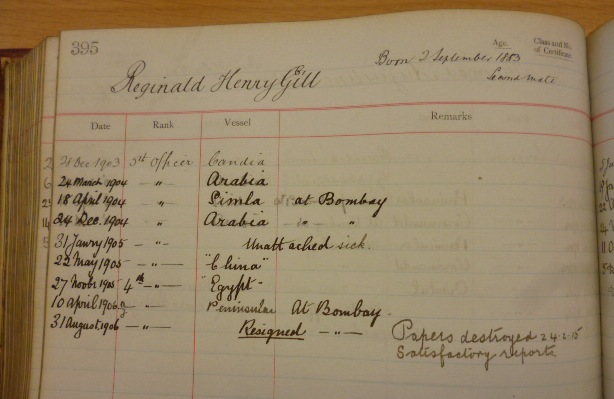
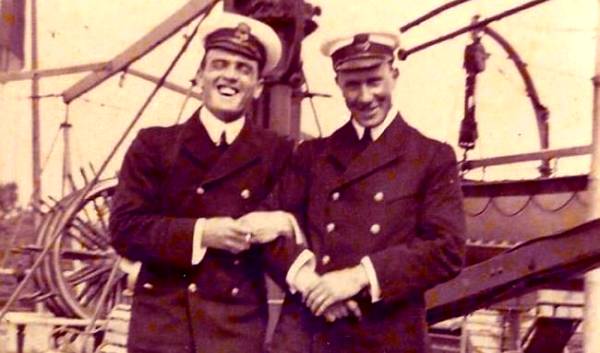
Captain Alexander Nicol Cameron MBE, seen on the left in this photograph, was born on 22nd September 1890 in Aberdeen, the son of Capt John Cameron (Shipmaster). He sailed in the ss Egypt as Senior 2nd Officer in 1921 - before her fatal collision. Leaving the P&O in 1922, to teach at Leith Nautical College, and shortly afterwards became Principal of the Sir John Cass Nautical College in London. He was awarded his MBE for his technical advice on the building and positioning of the Mulberry Harbours in the Normandy landings of 1944, particularly on Gold, Juno and sword beaches. He died 24 Aug 1983 in Dartford, Kent aged 92.
P&O rank insignia evolved over several decades, into one where all Deck Officers wore 'fore and aft' shoulder straps denoting their rank: one gold stripe for the Fourth Officers; two for the Third; two and a half for the Second Officer; three for the Chief Officer and a broad band and a rising sun for the Commander. Caps were Royal Navy style with a rising sun and anchor in gold thread.
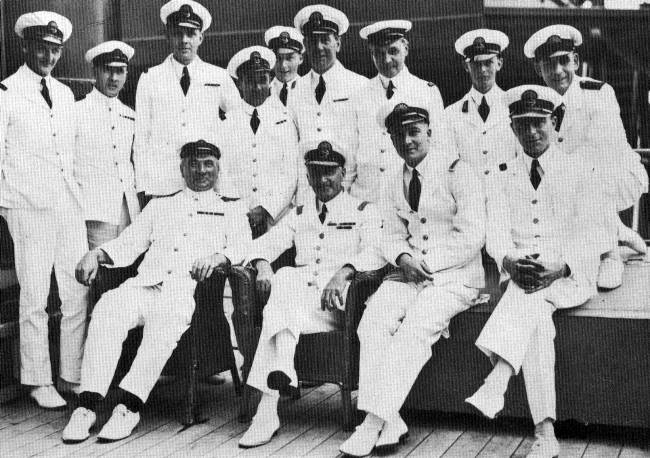
Captain Browning and Officers of the ss Maloja, 1923. The Chief Engineer, seated on the Captain's right, is wearing black socks.
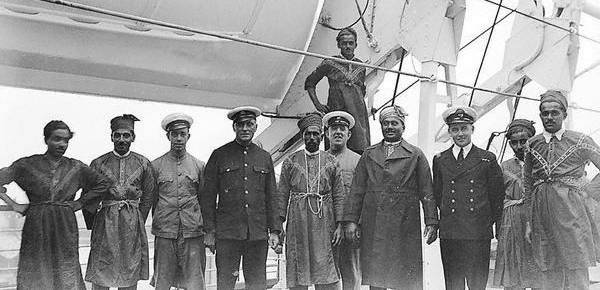
Chief Officer, Petty Officers and Lascars in a break from boat drill on board Strathnaver, 1933.
The duties of officers were as formally defined as the discipline and uniform. The Chief Officer was the principal executive, responsible for the work of the deck crew and carpenters and the cleanliness of the vessel, the masts, sails and rigging, fire pumps and hoses, lifeboats, cargo gear, cables, hawsers, paint and all the marine and carpenters' stores. At sea he was jointly responsible with the Commander for safe navigation. Although in the early days there were several different watch-keeping arrangements according to individual Commanders, it was accepted by the 1880s that the Chief Officer stood the 4.00 to 8.00 watch, morning and evening; in addition, like the Commander, he was required to be alert when the ship approached land or narrow waters.
The Second Officer's special responsibility was the navigational equipment, chronometers - which had to be wound and checked against each other daily - compasses, charts, lead and log; he was also the cargo officer, responsible for preparing stowage plans, and for the cleanliness and order of the holds, and the discharge of cargo at the various ports. He stood the 12.00 to 4.00 watch, afternoon and morning.
The Third
Officer, from the early 1870s, held the responsibilities although not the power
that in earlier years had been discharged by the
Admiralty mail officers. As the quantity of mails increased with every year, so
his duties increased beyond anything the old naval agents had known. Here is a
description of the formidable task at its
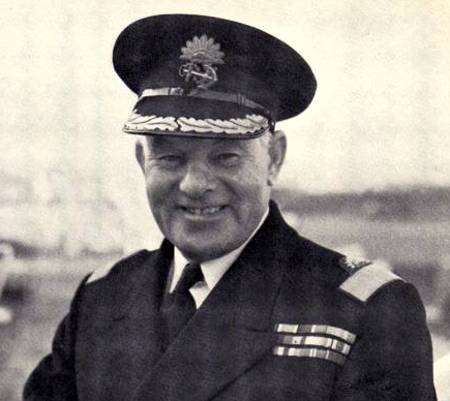
Commodore D.G.Baillie on board ss Himalaya, 1955
"The
preliminaries began before the homeward bound mail ship had reached the
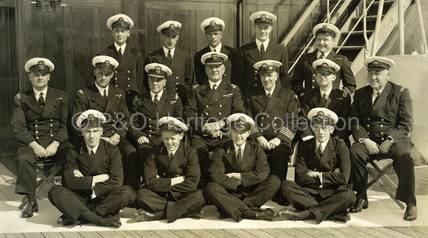
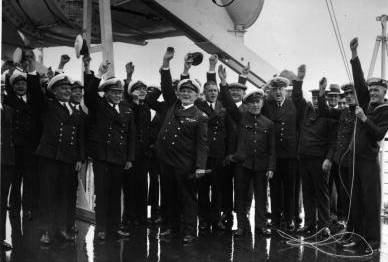
Captain and Officers of the ss Strathmore, anchored off Gourock in 1935, and cheering as the P&O house flag is hoisted for the first time. Photo Sources: P&O Heritage and Getty Images.
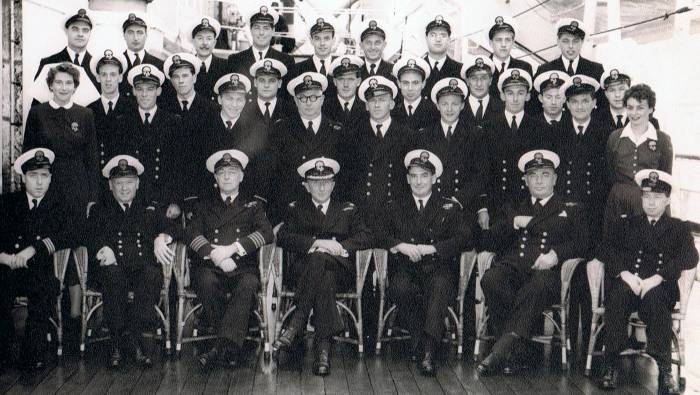
Captain and Officers, ss
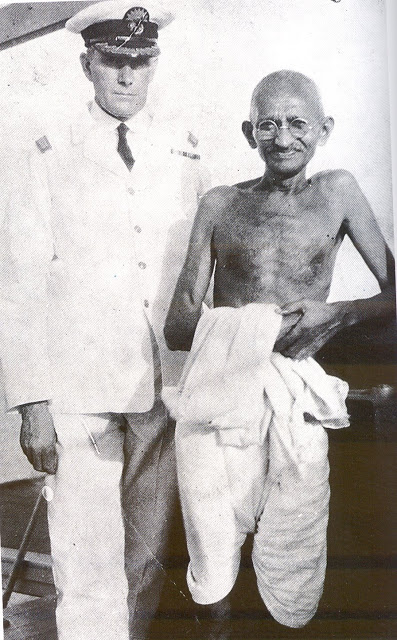
Captain H.M.Jack and Mahatma Ghandi on board SS Rajputana in 1931
Example of a Deck Officer’s service with P&O
Source: The National
Maritime Museum - REF: P&O/75/4
HENRY HEYWOOD
|
Age |
Date of Entry |
Capacity |
Vessel |
Line of Navigation |
Class of Certificate |
|
22 |
July 1860 |
5th Officer |
|
|
2nd Mate |
|
|
|
|
|
Proceeded overland to |
|
|
|
7 Oct 1860 |
Appointed 4th
Officer |
|
|
|
|
|
21 May 1862 |
Appointed 4th
Officer |
|
|
|
|
|
23 Jul 1862 |
Appointed 4th
Officer |
|
|
|
|
|
27 Jan 1863 |
Promoted to 3rd
Officer |
|
|
|
|
|
1 Feb 1864 |
Promoted to 2nd
Officer |
|
|
|
|
|
23 Apr 1865 |
Promoted to Acting Chief
Officer |
|
|
|
|
|
13 May to 21 Aug 1865 |
|
Returned to |
|
|
|
|
May 1866 |
Promoted to Chief Officer |
and proceeded in her to |
Australian |
|
|
|
30 Sep 1866 |
Appointed Chief Officer |
S.S. ELLORA |
|
|
|
|
23 Jan 1867 |
Appointed Chief Officer |
NORTHAW |
|
|
|
|
6 May 1867 |
Appointed Chief Officer |
NORNA |
|
|
|
|
19 Feb 1869 |
Appointed Chief Officer |
MALACCA |
|
|
|
|
30 May 1870 |
|
Unattached at |
|
|
|
|
8 June 1870 |
|
Returned to |
|
|
|
|
31 Jul 1870 |
|
Arrived at |
|
Master |
|
|
19 Jul 1871 |
Appointed Chief Officer |
|
|
|
|
|
20 May 1872 |
|
Upon |
|
|
|
|
27 May 1872 |
|
Mr
Heywood applied for leave but in consequence of the reply to his
telegram not being agreeable Mr Heywood
resigned the Company’s Service |
|
|
|
|
10 Jun 1872 |
|
He arrived at |
|
The 1960s
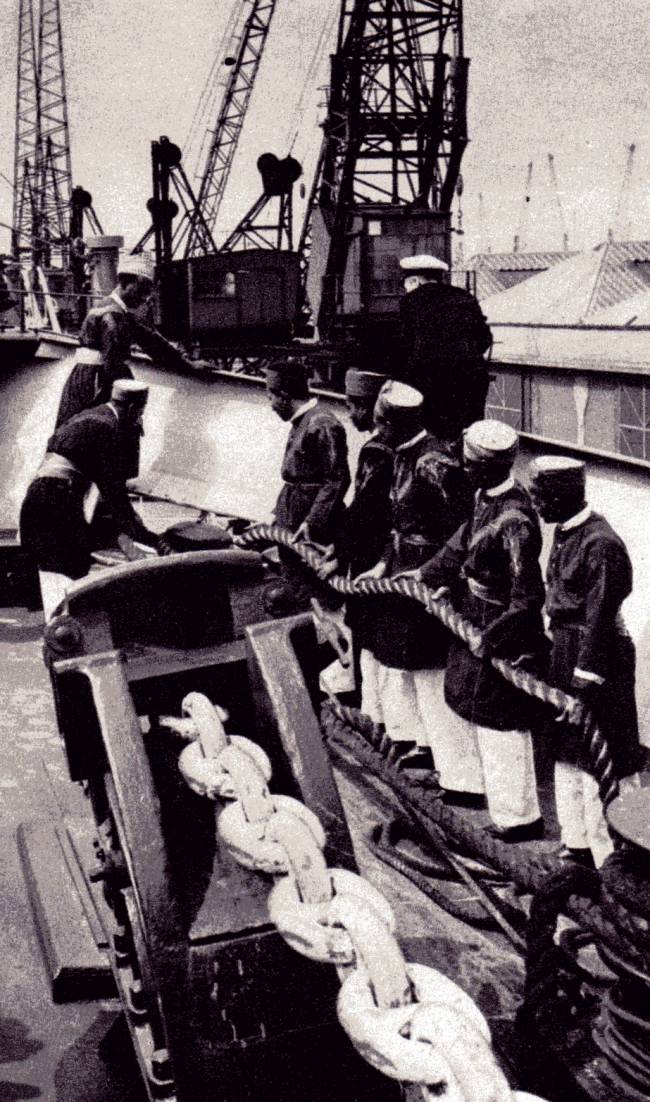
Third Officer supervising docking of cargo ship in the Royal Docks, London 1961
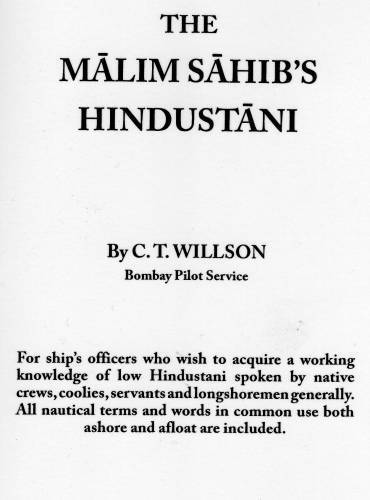
The Deck Officers' Hindustani Handbook
Orders to the Indian crew were given in Hindustani- ‘Bot atcha!’
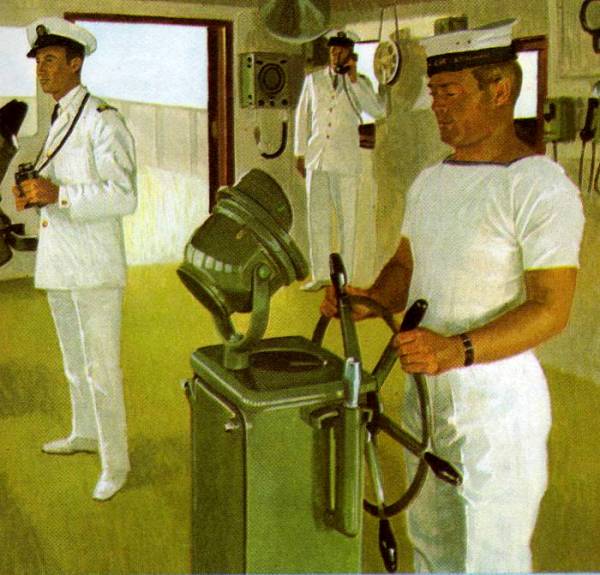
First Officer, Third Officer and Quartermaster on the bridge, ss Arcadia 1961. Source: Ladybird Books
The Dawn of a New Era
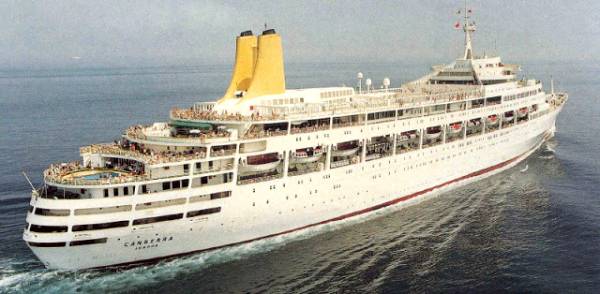
P&O's Iconic New Flagship - the ss
P&O ss
Back row left to right -
JG (Dickie) Clark 1/O, T.Sutton J/3/O, M.Thorley 4/O, A. Black 1/O, J.Perry S/3/O
Front left to right - G.Howe, S/1/O Navigator,
Staff Captain M.Prowse, Commodore
G.Wild, C/O R. Game, M.V.N.('Sammy')
Photo: John Perry, Senior Third Officer
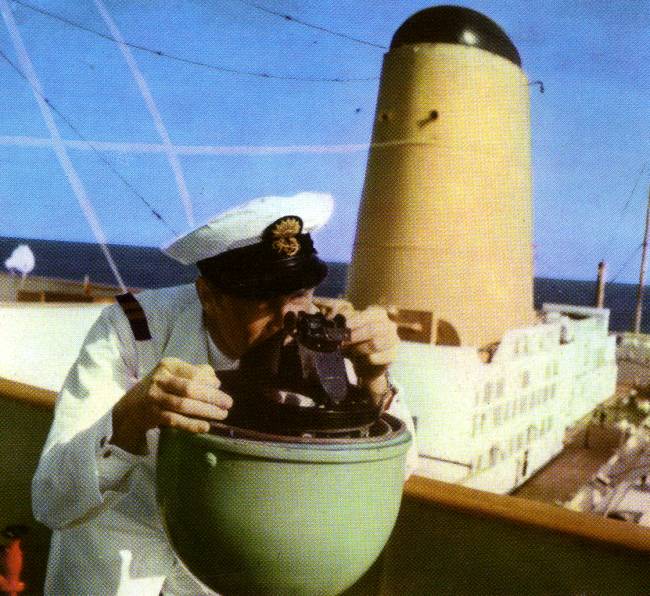
Second Officer ss Arcadia, taking a compass bearing, 1961
The Company enjoyed the kudos of its ships flying the Blue Ensign and encouraged its Officers to join List One of the Royal Naval
Reserve.
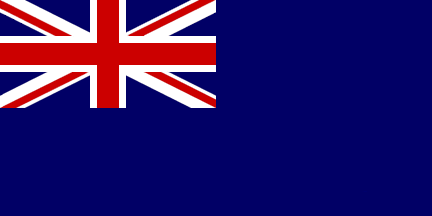
In 1864 it was announced that a British merchant ship would be allowed to fly the plain Blue Ensign providing that the ship's master was an officer of the Royal Naval Reserve and the crew contained a specified number of reservists. Ships were to carry two guns for drill purposes, but this requirement was modified in 1865, and abandoned in 1866. The necessary number of reservists in the crew was one quarter of the crew, increased to one third when guns were made optional and reduced to master plus ten in 1866. Permission to fly the Blue Ensign was in the form of a warrant, issued in the name of the ship by the Registrar General of Seamen, for one voyage only.
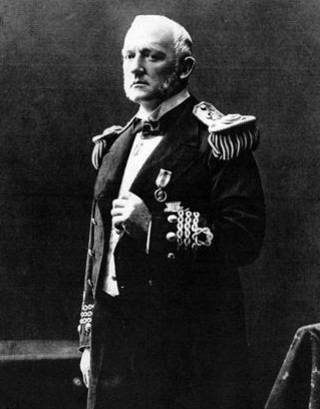
A Commander RNR, c1895
In addition to RN rates of pay while training, or engaged on active service, Officers received a uniform upkeep allowance and a modest annual, tax-free bounty.

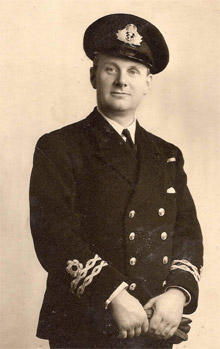
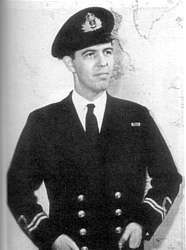
Lieutenant Royal Naval Reserve and Lieutenant Royal Naval Volunteer Reserve
In 1958, the Royal Naval Reserve merged with Royal Naval Volunteer Reserve and the distinctive RNR and RNVR braid was exchanged for RN-style lace, with a simple 'R' within the curl.
From 1958, List One RNR masters were permitted to fly the Blue Ensign, if just one other officer was in the RNR.
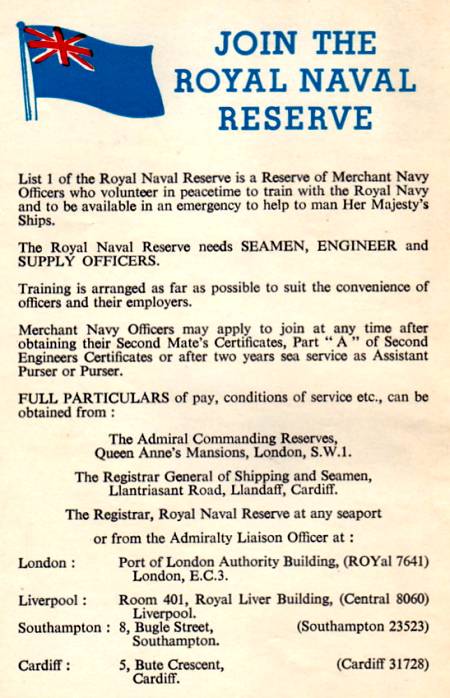
A 1961 advertisement for List One RNR Officers.
Pre-1972 P&O S N Co Rank Insignia
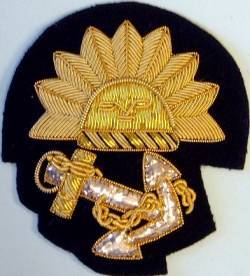
The distinctive Company Cap Badge
Senior Deck Officers
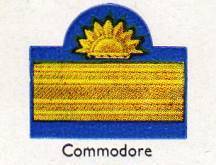
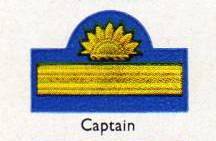
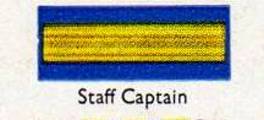


Junior Deck Officers



